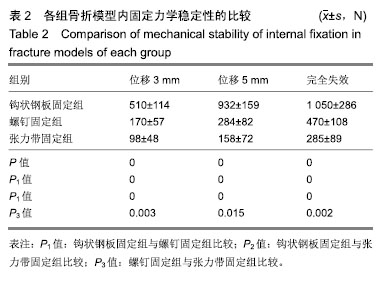| [1] Robinson CM,Shur N,Sharpe T,et al.Injuries associated with traumatic anterior glenohumeral dislocations.J Bone Joint Surg Am.2012;94(1):18-26. [2] Marsh JL,Slongo TF,Agel J,et al.Fracture and dislocation classification compendium - 2007: Orthopaedic Trauma Association classification, database and outcomes committee. J Orthop Trauma. 2007;21(10 Suppl):S1-133. [3] Mutch J,Laflamme GY,Hagemeister N,et al.A new morphological classification for greater tuberosity fractures of the proximal humerus: validation and clinical implications. Bone Joint J. 2014;96-B:646-651. [4] Yoon TH,Choi CH,Choi YR,et al.Clinical outcomes of minimally invasive open reduction and internal fixation by screw and washer for displaced greater tuberosity fracture of the humerus.J Shoulder Elbow Surg.2018;27:e173-e177. [5] White EA, Skalski MR, Patel DB, et al. Isolated greater tuberosity fractures of the proximal humerus: anatomy, injury patterns, multimodality imaging, and approach to management. Emerg Radiol.2018:25(3):235-246. [6] Park SE,Jeong JJ,Panchal K,et al.Arthroscopic-assistedplate fixation for displaced large-sized comminuted greater tuberosity fractures of proximal humerus: a novel surgical technique.Knee Surg Sports Traumatol Arthrosc. 2016;24(12): 3892-3898. [7] Gillespie RJ,Johnston PS,Gordon VA,et al.Using Plate Osteosynthesis to Treat Isolated Greater Tuberosity Fractures.Am J Orthop (Belle Mead NJ). 2015;44(8): E248-251. [8] Muhm M,Arend S,Winkler H,et al.Associated injuries with greater tuberosity fractures : Mechanism of injury, diagnostics, treatment.Unfallchirurg.2017;120(10):854-864. [9] DeBottis D,Anavian J,Green A.Surgical management of isolated greater tuberosity fractures of the proximal humerus.Orthop Clin North Am.2014;45(2):207-218. [10] Park TS, Choi IY, Kim YH, et al. A new suggestion for the treatment of minimally displaced fractures of the greater tuberosity of the proximal humerus.Bull Hosp Jt Dis.1997; 56(3):171-176. [11] Verdano MA,Aliani D,Pellegrini A,et al.Isolated fractures of the greater tuberosity in proximal humerus: does the direction of displacement influence functional outcome? An analysis of displacement in greater tuberosity fractures.Acta Biomed. 2014;84:219-228. [12] Mutch JA,Rouleau DM,Laflamme GY.Accurate Measurement of Greater Tuberosity Displacement Without Computed Tomography: Validation of a Method on Plain Radiography to Guide Surgical Treatment.J Orthop Trauma. 2014;28(8): 445-451. [13] Janssen SJ,Hermanussen HH,Guitton TG,et al.Greater Tuberosity Fractures: Does Fracture Assessment and Treatment Recommendation Vary Based on Imaging Modality?Clin Orthop Relat Res.2016;474(5):1257-1265. [14] Gruson KI,Ruchelsman DE,Tejwani NC.Isolated tuberosity fractures of the proximal humeral: Current concepts.Injury. 2008;39(3):284-298. [15] Rouleau DM,Mutch J.Surgical Treatment of Displaced Greater Tuberosity Fractures of the Humerus.J Am Acad Orthop Surg.2016;24:46-56. [16] Jehan S,Akhi Baig NM.Treatment of Shoulder Dislocation with Greater Tuberosity and Glenoid Fractures.J Coll Physicians Surg Pak.2016;26(12):997-999. [17] Sproul RC,Iyengar JJ,Devcic Z,et al.A systematic review of locking plate fixation of proximal humerus fractures.Injury. 2011;42(4):408-413. [18] Lill H,Lange K,Prasse-Badde J,et al.T-plate osteosynthesis in dislocated proximal humerus fractures.Unfallchirurgie. 1997; 23(5):183-192. [19] Popp D,Schoffl V,Strecker W.Osteosynthesis of displaced fractures of the greater tuberosity with the Bamberg plate.Oper Orthop Traumatol.2016;28(5):392-401. [20] Bogdan Y,Gausden EB, Zbeda R,et al.An alternative technique for greater tuberosity fractures: use of the mesh plate.Arch Orthop Trauma Surg.2017;137(8):1067-1070. [21] Gaudelli C,Ménard J,Mutch J,et al.Locking plate fixation provides superior fixation of humerus split type greater tuberosity fractures than tension bands and double row suture bridges.Clin Biomech (Bristol,Avon).2014;29:1003-1008. [22] Lorbach O,Bachelier F,Vees J,et alCyclic loading of rotator cuff reconstructions: single-row repair with modified suture configurations versus double-row repair.Am J Sports Med. 2008;36(8):1504-1510. [23] Brais G,Ménard J,Mutch J,et al.Transosseous braided-tape and double-row fixations are better than tension band for avulsion-type greater tuberosity fractures.Injury. 2015;46: 1007-1012. [24] Yin Q,Rui Y,Wu Y,et al.Surgical treatment of avulsion fracture around joints of extremities using hook plate fixation.BMC Musculoskelet Disord.2019;20(1):200. [25] Aguado HJ,Ariño B,Moreno-Mateo F,et al.Does an early mobilization and immediate home-based self-therapy exercise program displace proximal humeral fractures in conservative treatment? Observational study.J Shoulder Elbow Surg.2018;27(11):2021-2029. [26] Lin CL,Hong CK,Jou IM, et al.Suture anchor versus screw fixation for greater tuberosity fractures of the humerus-a biomechanical study.J Orthop Res.2012;30(3):423-428. [27] Maier D,Jaeger M,Izadpanah K,et al.Proximal Humeral Fracture Treatment in Adults.J Bone Joint Surg Am. 2014; 96(3):251-261. |



